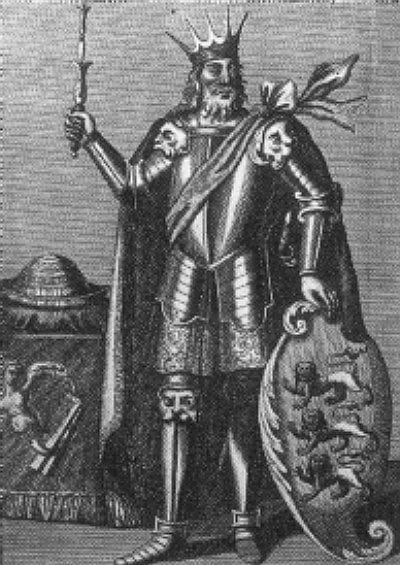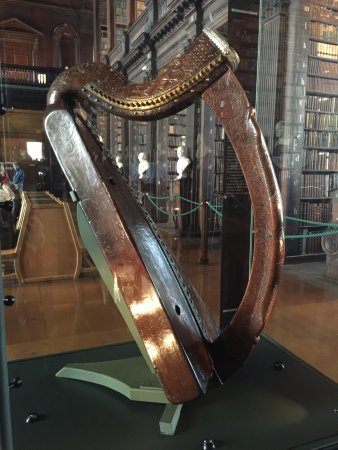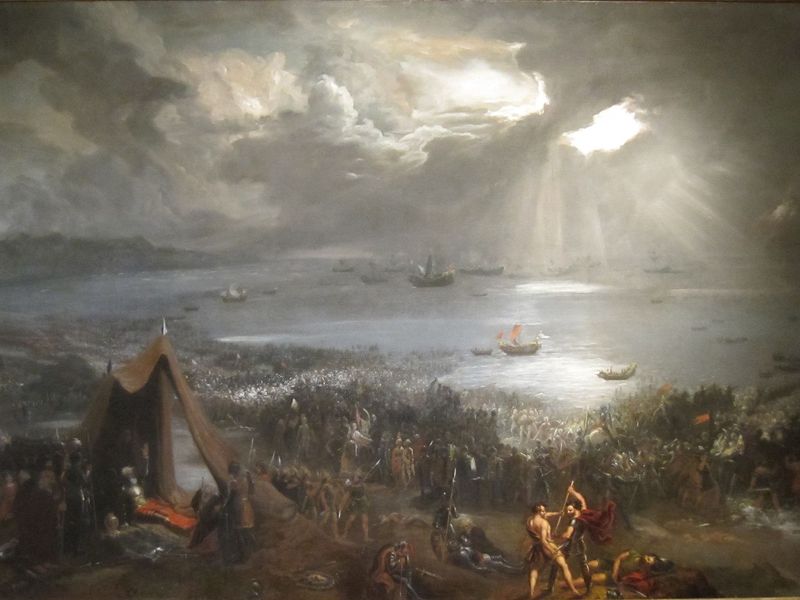

Thanks for getting in touch Kevin and sharing that idea. I don't believe we have anything like it and do you know we never thought of it? Will look into it.
Written by Ciaran Vipond on Jul 31, 2019 | 4 Comments
Irish school children learn all about his achievements, a pub named for him is mentioned in Ulysses, and he is honoured with his own festival in his hometown each year. But who was Brian Boru? And why is he such an iconic figure in Irish history?

Brian of Béal Bóraimhe, was born near Killaloe in Co Clare around 941, although the exact date is of some debate!

He was part of the Dál Cais dynasty that held a royal stronghold north of Limerick at Kincora, now known as Killaloe. Before Brian and his immediate family, the Dál Cais were not particularly powerful. An ambitious young Brian built on the successes of his father, Cennétig, and his older brother, Mathgamain, to make himself king of all Munster, amassing an impressive army and navy.
Before Brian’s meteoric rise, political power was largely dominated by another great family, the Uí Néill dynasty. But after winning the submission of kings Osraige and Leinster to the east, Brian increased pressure on the then high-king of Ireland, Máel Sechnaill, whose Uí Néill dynasty had ruled unopposed for centuries.

After Brian's capture of Viking Dublin in 999, he was acknowledged as the most powerful king in Ireland. But it took several more years of military campaigning and strategy, before the Uí Néill high king, Máel Sechnaill recognised him as the "Ard Ri", the High King in 1002.

After finally achieving his ambition, the new high King didn’t rest on his laurels. He set about defending and rebuilding Ireland which had suffered under years of Viking raids. He oversaw the replanting of forests cut down for Viking long boats, the rebuilding churches, and establishment of new religious and artistic centers. He even sent people overseas to find replacements books and artefacts lost in raids. He was also reportedly a great patron of the arts, being a fine harper himself. And one of the oldest and greatest Irish Harps, the inspiration for the Irish national mark and the iconic Guinness logo, still bears his name.

But he is perhaps best known for his glorious victory and death at the battle of Clontarf on Good Friday, April 1014. Facing down an alliance of Dublin Vikings, their Leinster allies, and Vikings from overseas, Brian Boru and his army, routed the rebellion and tilted the axis of power back to the Irish.

After his death, his brother Malachy briefly took power. But the Dal Cais dynasty’s strength remained only in Munster, and never again was there an “Ard Ri” of all Ireland. But Brian Boru’s legacy was cemented, with his reign romanticised by his descendants, the Uí Briains, in works such as the Cogadh Gáedhel re Gallaibh, 'The War of the Irish Against the Foreigners.'
Today his legacy lives on in his numerous descendants, and the O’Brien family name. With the name meaning 'exalted one' or 'noble' the O’Brien shield motif bears three lions stacked vertically, symbolizing the brave warrior roots of this family tree.
Descendants from the greatest Irish High King, O’Briens are found throughout Ireland and worldwide, but especially in the former Kingdom of Munster, in Counties Clare, Limerick, Tipperary and Waterford.
Have a question or something you're not entirely sure about when browsing our pieces? Please reach out. You can send us a note or give us a call—the Dublin workshop is here to make sure that you have a perfect experience from start to finish with My Irish Jeweler.
Follow us on Facebook and Instagram, to see what's new and upcoming. Join our Email list for early offers and special features.

Ciaran Vipond
My Irish Jeweler
Born in Co. Antrim and reared in Dublin, I was fascinated with Gaelic culture from an early age. I suppose it's not surprising given my mother inherited a grá for the Irish language from my grandfather, an Irish school headmaster. And that grá continues! My brother and sister are now Gaelic teachers here in Ireland, my niece is an award winning Irish dancer, and I proudly work to share Irish culture through our Irish and Celtic Jewelry at My Irish Jeweler!
I love researching and reading about the history of Irish design. It's at the core of what we do here at My Irish Jeweler. I find much of it so interesting that I have to share what I find. I hope you enjoy it!


Thanks for getting in touch Kevin and sharing that idea. I don't believe we have anything like it and do you know we never thought of it? Will look into it.

How much is your cost for researching my last name?

Hello! Thanks for getting in touch. We would be very happy to research your family heraldry for you and we wouldn't dream of charging for that! But we are jewelers not genealogists, so if you are looking for more in-depth research into your family tree, we recommend getting in touch with an accredited genealogist who can help you https://accreditedgenealogists.ie/ .

I am interested in the "O'Brien Knot" in the form of a pendant or earrings. I think there would be a market for this piece of jewelry for O'Brien's around the world.
The piece would be attractive as a raised knot on a pendant or earrings or a open looped knot hanging from a chain or ear.